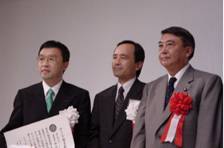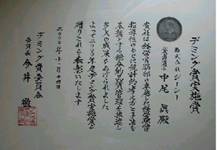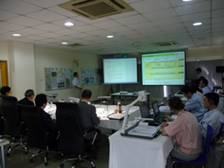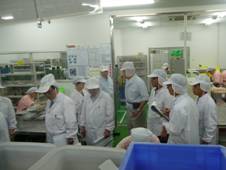今天WSJ的這篇 讓我們可以從系統思考出發來談世事.....
Beggar thy neighbour, or beggar-my-neighbour,
以鄰為壑“beggar-thy-neighbor” strategy
諾獎得主:量化寬鬆沒用 還是學學中國
諾貝爾經濟學獎獲得者斯蒂格利茨說﹐美聯儲的量化寬鬆政策只是“以鄰為壑”的貨幣貶值策略﹐美國應該學習中國的經濟刺激藝術。Nobel Prize-winning economist Joseph Stiglitz, dismissing the Federal Reserve’s quantitative easing as a “beggar-thy-neighbor” strategy of currency devaluation, called on America to learn the art of stimulus from China.
****
Beggar thy neighbour, or beggar-my-neighbour, is an expression in economics describing policy that seeks benefits for one country at the expense of others. Such policies attempt to remedy the economic problems in one country by means which tend to worsen the problems of other countries.
Original application
The term was originally devised to characterize policies of trying to cure domestic depression and unemployment by shifting effective demand away from imports onto domestically produced goods, either through tariffs and quotas on imports, or by competitive devaluation. The policy can be associated with mercantilism and the resultant barriers to pan-national single markets.
Extended application
"Beggar thy neighbour" strategies of this kind don't apply only to countries: overgrazing provides another example, where the pursuit by individuals or groups of their own interests leads to problems. This dynamic has been called the "tragedy of the commons," though it appears as early as the works of Plato and Aristotle.
According to economist Joan Robinson "beggar they neighbour" policies were widely adopted by major economies during the Great depression of the 1930s. [1]
The phrase is in widespread use, and is used in such publications as The Economist[2] and BBC News[3]. The term presumably originates from the name of the Beggar-My-Neighbour card game.
*****
Nobel Prize-winning economist Joseph Stiglitz, dismissing the Federal Reserve’s quantitative easing as a “beggar-thy-neighbor” strategy of currency devaluation, called on America to learn the art of stimulus from China.
President Barack Obama has defended the Fed’s controversial program, telling the world that a fast-growing America is good for the world economy. But Mr. Stiglitz, in comments at a conference in Hong Kong on Thursday, charged that quantitative easing, by leading to a weaker U.S. dollar, in fact steals growth from other economies.
“President Obama has rightly said that the whole world will benefit if the U.S. grows, but what he forgot to mention is…that competitive devaluation is a form of growth that comes at the expense of others,” Mr. Stiglitz said at the Mipim Asia real estate conference. “So I think it is likely to present problems for the global economy going forward.”
Emerging-market nations have bristled at the Fed’s move to spur the U.S. economy by increasing the U.S. money supply. They worry it will end up instead as a tidal wave of “hot money” that will overwhelm smaller, developing economies, creating asset bubbles and inflation. To prevent that, many are establishing or strengthening capital controls, banking regulations that restrict the flow of money into and out of economies. Taiwan and Brazil are the latest to act. South Korea is also considering measures.
That patchwork of international capital controls is “fragmenting the global capital market,” Mr. Stiglitz said.
Rather than just looser monetary policy, the Columbia University economist urges more government spending by countries whose low borrowing costs make it affordable─notably the U.S.
“We really should learn the lesson from China,” he said. “If you take money and spend it on investments, then you grow the economy in the short run, but you also grow the economy in the long run.” He says China’s massive infrastructure investments over the past two years have “changed the economic geography” of that country, setting it up for strong growth in the years ahead.
The U.S. should do the same, he said, adding that because it has funded infrastructure so poorly over the past 20 years, projects will likely have strong positive return on investment.
“We have a big list of what we need to do,” he said. “We could begin with high-speed railroads. On the list of infrastructure that was drawn up in 2000, at the top of the priority was New Orleans levees. It was public knowledge that New Orleans needed new levees; $5 billion invested in New Orleans levees would have saved $200 billion. Figure out the rate of return on that.”
He recognizes, however, that this dream of a second fiscal stimulus is unlikely to materialize. Much more likely is an extension of the Bush administration’s tax cuts, whose “bang for the buck is very low,” he said, and which will hurt the federal budget deficit.
On the issue of exchange rates, Mr. Stiglitz falls into the emerging-markets camp, led by China, that thinks the system of free-floating rates advocated for decades by the developed world is too volatile.
“An ordinary business, they just want to sell products,” he said. “With the exchange rate going up and down all over the place…you don’t know what you are going to get in return for the sales of your products.” Financial markets haven’t created hedging tools that are good enough and cheap enough to provide protection, he said.
“There’s a high social cost for the volatility in exchange rates,” he said. “So it’s very reasonable for governments to stabilize what the markets haven’t done a very good job at.”
So if you accept that intervention in currency markets to reduce volatility isn’t damaging to the world economy, where does it cross the line and become “beggar-thy-neighbor” manipulations? That’s the crux of the problem that policymakers at the G-20 are trying to hash out.
For instance, China has accumulated $250 billion in reserves this year while letting its currency appreciate only about 3%. Is that too much?
Mr. Stiglitz says China’s currency policy is understandable. And he echoed Premier Wen Jiabao’s contention that fast currency appreciation would send thousands of Chinese businesses into insolvency.
Given the failure of markets to offer adequate protection to export-dependent firms, he said, “to make sure that the exchange-rate volatility is not such as to force significant number of firms in bankruptcy that have macroeconomic consequences, that is at least the minimal intervention that is appropriate on behalf of government.”
Alex Frangos諾
貝爾經濟學獎得主斯蒂格利茨(Joseph Stiglitz)將美聯儲(Federal Reserve)的量化寬鬆政策貶斥為“以鄰為壑”的貨幣貶值策略﹐並呼籲美國學習中國的經濟刺激藝術。
美國總統奧巴馬(Barack Obama)曾為美聯儲這個有爭議的計劃說好話。他對國際社會說﹐美國經濟的快速增長對整個世界經濟有利。但斯蒂格利茨週四在香港一場研討會上發言時指責﹐量化寬鬆造成美元貶值﹐實際上是在從其他經濟體竊取增長。
斯蒂格利茨在亞洲國際地產投資交易會(Mipim Asia)上說﹐奧巴馬總統說﹐如果美國實現增長﹐整個世界將會受益﹐這一點說得對﹐但他忘記提一點﹐即競爭性貨幣貶值是一種以他人為代價的增長形式﹔所以我認為它將來可能會給世界經濟帶來麻煩。
美 聯儲通過增加美國貨幣供給刺激美國經濟的量化寬鬆政策﹐已經引起了新興市場國家的警覺。他們擔心此舉最終反倒造成大量“熱錢”湧入﹐催生資產泡沫和通貨膨 脹﹐讓規模更小的發展中經濟體無力招架。作為防範﹐很多國家和地區都在建立或強化資本管制﹐即限制資金出入的銀行監管措施。最新採取這種措施的是台灣和巴 西﹐韓國也在考慮採取什麼樣的具體辦法。
斯蒂格利茨說﹐各國資本管制各自為政﹐“正在分裂全球資本市場”。
斯蒂格利茨來自美國哥倫比亞大學(Columbia University)。他呼籲低利率國家(特別是美國)不要僅僅是放寬貨幣政策﹐還要借低利率優勢提高政府支出。
他說﹐我們真的要向中國學習經驗﹐如果拿錢投資﹐短期內經濟就會增長﹐長期也會因此而增長。他說中國過去兩年的大規模基礎設施投資已經改變了整個國家的“經濟地理”﹐從而為將來幾年的強勁增長奠定了基礎。
他說﹐美國也應該這樣做﹐而且各種項目很有可能取得可觀的投資回報﹐因為過去20年基礎設施的投入實在太少。
斯 蒂格利茨說﹐美國有一系列事情亟待完成﹐我們可以開始高速鐵路建設﹔2000年草擬的基礎設施建設清單上﹐首要任務就是建設新奧爾良的防洪堤壩﹔眾所周知 ﹐新奧爾良需要一個新堤壩﹐若當初能夠投資50億美元建設防洪堤﹐則可挽回2,000億美元的損失(譯者注:指的是2005年卡特琳娜颶風)﹐想想這個項 目的資本回報率有多大吧。
不過﹐斯蒂格利茨承認﹐第二輪刺激財政的夢想不太可能實現。他說﹐相比之下﹐小布什政府出台的減稅政策倒更有可能得到延期﹐該政策的成本與效益比例非常低﹐而這將影響聯邦政府的預算赤字。
在匯率問題上﹐斯蒂格利茨與以中國為首的新興市場看法一致﹐認為發達國家數十年來擁護的自由浮動匯率制波動性太大了。
斯蒂格利茨說﹐對於普通企業來說﹐它們只是想把自己的產品賣出去﹐而匯率總是一刻不停地上下波動﹐這讓企業不清楚自己在賣出產品之後換回的是什麼。他說﹐金融市場還沒有發明出可為企業保值的足夠好、足夠便宜的避險工具。
斯蒂格利茨說﹐匯率波動產生的社會成本也很高﹐因此各國政府要將市場沒有管理好的匯率穩定下來﹐這是非常合情合理的。
因此﹐如果你接受為減少匯率波動而出手干預匯市的做法﹐認為其對世界經濟沒有造成傷害﹐那麼認為這種做法“越界”並成為“損人利己”的操縱手段的說法從何談起呢?這是20國集團峰會上各國決策者正試圖取得一致的核心問題。
例如﹐有人會說:中國今年已積累了2,500億美元的外匯儲備﹐但卻令人民幣僅升值了約3%。這個做法不是很過分嗎?
斯蒂格利茨說﹐中國的匯率政策是可以理解的。他響應了中國國務院總理溫家寶的觀點﹐即人民幣快速升值會造成數千家中國企業倒閉。
斯蒂格利茨說﹐鑒於市場不能為依賴出口的企業提供充分保護﹐那麼確保本國匯率波動不至於迫使相當數量的、對宏觀經濟有影響的本土企業倒閉﹐這至少是一個政府應當做出的、最起碼的干預舉動。
Alex Frangos(更新完成)










